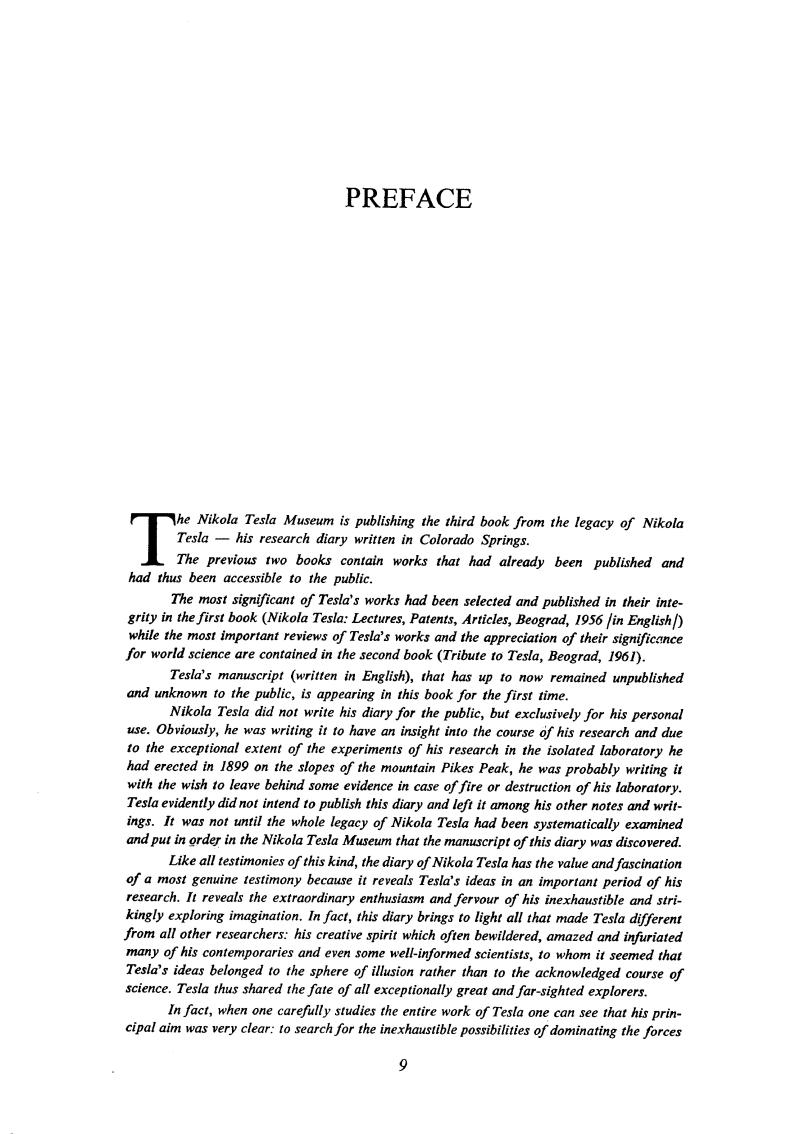
Nikola Tesla Books
PREFACE
The Nikola Tesla Museum is publishing the third book from the legacy of Nikola Tesla - his research diary written in Colorado Springs.
The previous two books contain works that had already been published and had thus been accessible to the public.
The most significant of Tesla's works had been selected and published in their integrity in the first book (Nikola Tesla: Lectures, Patents, Articles, Beograd, 1956 [in English]) while the most important reviews of Tesla's works and the appreciation of their significance for world science are contained in the second book (Tribute to Tesla, Beograd, 1961).
Tesla's manuscript (written in English), that has up to now remained unpublished and unknown to the public, is appearing in this book for the first time.
Nikola Tesla did not write his diary for the public, but exclusively for his personal use. Obviously, he was writing it to have an insight into the course of his research and due to the exceptional extent of the experiments of his research in the isolated laboratory he had erected in 1899 on the slopes of the mountain Pikes Peak, he was probably writing it with the wish to leave behind some evidence in case of fire or destruction of his laboratory. Tesla evidently did not intend to publish this diary and left it among his other notes and writings. It was not until the whole legacy of Nikola Tesla had been systematically examined and put in order in the Nikola Tesla Museum that the manuscript of this diary was discovered.
Like all testimonies of this kind, the diary of Nikola Tesla has the value and fascination of a most genuine testimony because it reveals Tesla's ideas in an important period of his research. It reveals the extraordinary enthusiasm and fervour of his inexhaustible and strikingly exploring imagination. In fact, this diary brings to light all that made Tesla different from all other researchers: his creative spirit which often bewildered, amazed and infuriated many of his contemporaries and even some well-informed scientists, to whom it seemed that Tesla's ideas belonged to the sphere of illusion rather than to the acknowledged course of science. Tesla thus shared the fate of all exceptionally great and far-sighted explorers.
In fact, when one carefully studies the entire work of Tesla one can see that his principal aim was very clear: to search for the inexhaustible possibilities of dominating the forces
9

